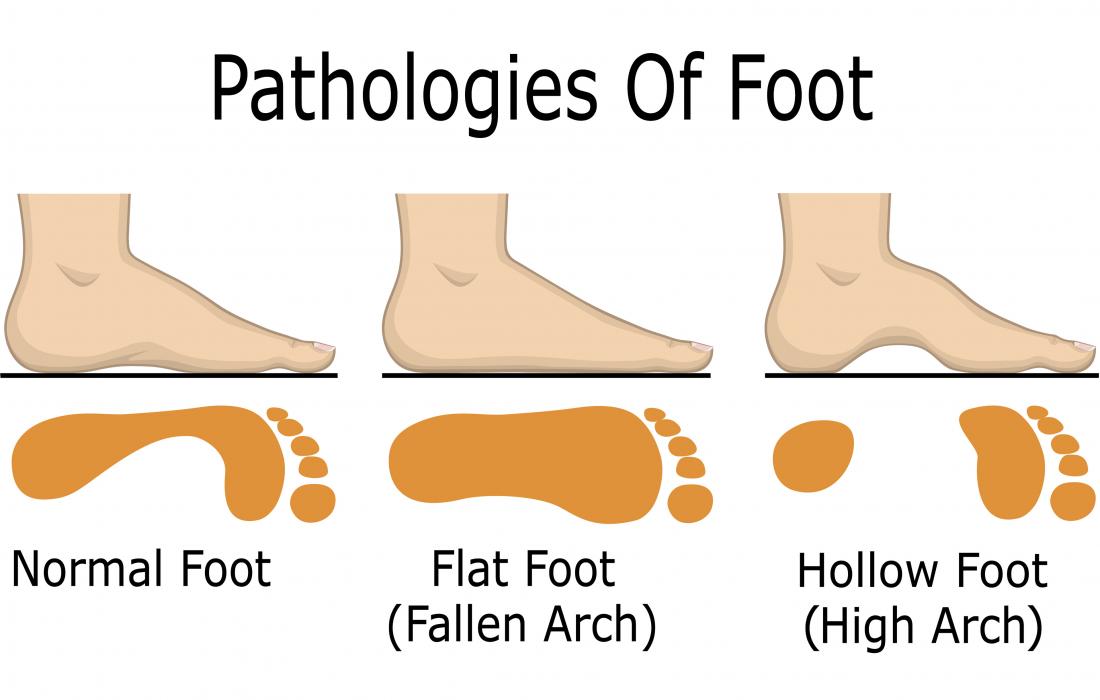

When the foot pronates, the leg rotates inward and the hip joints can become misaligned. Overpronation can also affect the hip joints. This is not the normal direction for the knee and puts additional stress on the joint. When your foot over-pronates, your leg rotates inward causing the knee to flex and extend while pointing inward. Overpronation can put unnecessary stress on your knees. Flat feet can also lead to tendinitis in your Achilles tendon because that tendon must over-compensate when you push off with your feet. This pain tends to increase with activity and may also present swelling along the inner ankle and arch, as well as hip, knee, and lower back pain. That extra motion can create other stresses further up your legs. If you have flat feet, your foot will tend to roll inward as you walk. If your foot doesn’t absorb that shock properly, it can cause other problems, and is why people with flat feet typically experience pain in the midfoot region. When you walk, you put as much as five times your body weight in force on each foot. If you are having problems with shin splints, back pain, your knees, or hips, you may want to consider looking at your feet as the cause. This overpronation causes the foot to be less able to absorb shock, placing greater stress on the feet, ankles, and knees. Overpronation occurs when the arch of the foot descends downward and inward as the foot strikes the ground. Flat feet are typically associated with excessive pronation of the foot. The shoe’s upper will also tend to lean inward over the sole as a result of the faulty foot mechanics. Similarly, if you inspect your shoes and see more wear on the inside of the soles, that would be evidence of flat feet. By contrast, a high arch foot will only show your heel and the top part of your foot near your toes. The thicker the imprint between the heel and ball of the foot, the flatter the foot. Flat feet can usually be self-diagnosed, either by the “wet footprint test” or the “shoe inspection test.” Simply wet your feet and look at the wet imprint of your foot. This condition may occur at the time of birth or develop over time as a result of aging or injury. WHAT ARE FLAT FEET?įlat feet, also known as pes planus or fallen arches, is a postural deformity that occurs when the arch of the foot collapses and comes into complete or near-complete contact with the ground. The structure of the foot arch determines how a person walks and needs to be both sturdy and flexible. The arches of the feet provide the spring to your step and help to distribute body weight and all its compressive forces across your feet and legs. The human foot has 33 joints that hold together 26 different bones and over 100 muscles, tendons, and ligaments. Support For Soldiers Who Carry Heavy Loads Sore Feet After A Long Shift? Find The Best Insole For Foot Painįalls Don't Have To Be An Inevitable Part of AgingĮducating Seniors About Medicare Coverage For Poidiatry Services Why Do Construction Workers Need Foot Support? On Your Feet All Day? How This Nurse Reduced Her Foot & Back Pain Healthy Feet + Happy Workers = Healthy BusinessĬoronavirus Effects On The Value of Corporate Wellness and Improving Workplace Productivityīest Orthotic Insoles For People Who Work On Their Feet How Can I Reduce Joint Pain Caused By Flat FeetĬustom Medical Orthotics vs. Therapies & Remedies to Treat (and Alleviate!) Plantar Fasciitis Pain What is Plantar Fasciitis? Insoles, Stretches & Other Treatments Therapies & Remedies to Treat (and ALLEVIATE !) Plantar Fasciitis Painīest 6 Ways to Reduce Pain From Plantar Fasciitis


 0 kommentar(er)
0 kommentar(er)
